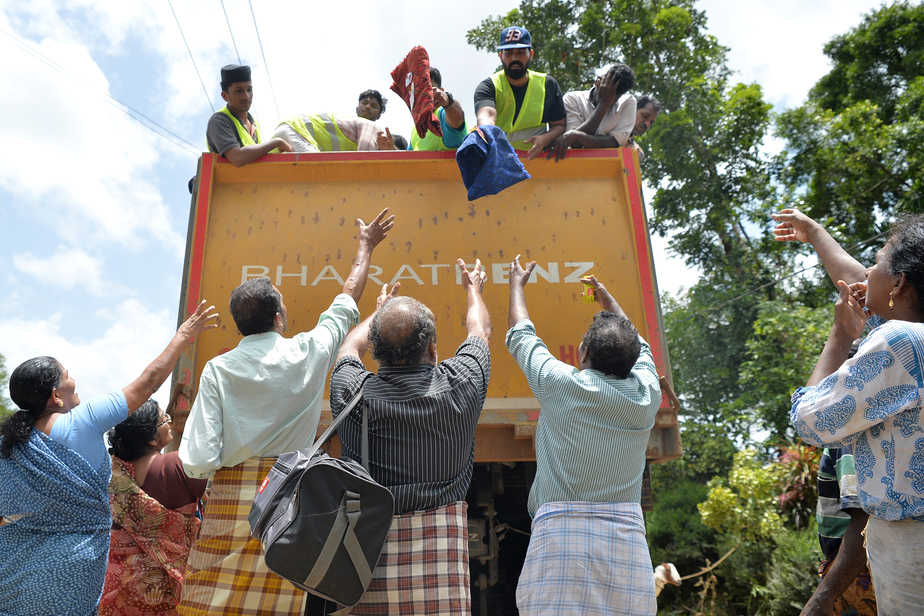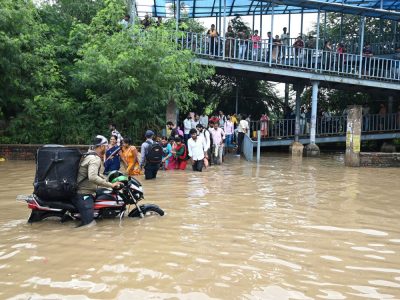There are enough generous people around eager to donate online, helping many in need to find their feet after floods or pay the costs of medical treatment. However, some glitches remain
With floods ravaging Kerala, the state government has asked people to donate generously for the relief, rehabilitation and rebuilding efforts. Various organisations have responded to the call to send funds, with many coming out to support this effort.
Even during this trying time, fake news about the misuse of the funds emerged. These rumour- mongers play on the doubts of people, who fear their money will not be used for the right cause. Many believe it and are dissuaded from doing the transfers. In the past, there have been instances of similar accusations. Even the Comptroller and Auditor General raised a flag on the funds released during 2014 floods in Jammu and Kashmir.
Conducting an audit of the amount of R1,369.16 crore, spent from State Disaster Management Response Fund (SDRF) from 2010 -11 to 2014-15, the CAG had pointed that 25 per cent (R342.43 crore) of the expenditure meant for disaster mitigation purposes was diverted towards ineligible works.
But Indians are perhaps more sceptical because dupers are everywhere. Be it the woman holding a child at the traffic light, with a fake medical receipt asking for money to buy medicines, or the child begging, concealing an arm under his shirt, pretending to be differently abled, or families with their bags near airports, railway station and even random street corners, telling some story about how they came to be standing there with their luggage, in need of money.
Things are changing, though.
Online crowdfunding sites have created what they claim is a fool-proof way to ensure no one gets duped. Ketto, for example, has an “assured” badge on campaigns, which means the platform has already confirmed the authenticity of the claim. It also asks all campaigners to enter an agreement and go through “a rigorous verification process”. Their ongoing fund for Kerala has raised over R1.86 crore.

Ketto, one of the major crowdfunding sites in India, says that they receive at least 100 requests for raising funds, every day! Another popular platform called Milaap receives almost the same amount of requests per day.
Many young people are now turning to this online medium, with the general age group that contacts Ketto being between 21 and 40 years. But they too have faced problems — about two or three they say in the past six years since its inception —not about misappropriation of funds, but things like change of situations. Like when the funds raised for an individual surgery was not needed anymore, because the patient got it done for free. In such circumstances, they inform donors, asking if the funds could be used “for post-operative care of the patient”.
In its first year, Ketto raised R45 lakh for 18 campaigns, and in total, has been a medium for raising over R300 crore. A study, “Crowdfunding at india: a study of indian online crowdfunding platforms” declares crowdfunding is still in its nascent stage in India. However, one can see it becoming a more acceptable platform to give to social causes, or help people suffering from deadly diseases.
Take the case of Sagar Dorji, a four-year-old boy from Lakhimpur in Assam, who developed a form of blood cancer in August 2016. This rare condition made his eyes swell and bleed. Sagar’s picture on his Ketto fundraiser had the power to evoke an emotion like no other. And they went on to raise over Rs 3 lakh.
There was also Nitesh Prajapat, suffering the final stage of cancer, whose plight moved many to donate for his treatment in America. People raised a colossal R1.32 crore. Prajapat passed away this year, but surely people’s generosity would have given him some hope and faith in humanity.
Milaap says that the cause that raised the most amount of money on their platform was for treatment. Help poured in for a father trying to save his daughter’s life from a rare genetic condition. She is now doing well, informs Milaap, after nearly 2000 people who stepped forward and raised nearly R1.4 crore.
Starting from 2010, Milaap has so far raised about R400 crore for over 1.2 lakhcauses. They say that campaigns involving a misuse of funds on their platform make up less than one-tenth of 1% of all funding requests, adding that when it does happen, the money is returned in full to every donor.
But this shouldn’t be too often as it also verifies every fundraiser set up within 24-48 business hours. At present, there are over 15,000 ongoing projects on Milaap.
But not all feel that the generosity of Indians can be counted on. Kapil Arora, who started a fundraiser in April this year, says that in his experience he found very few people from the country willing to give. He adds that they were more likely to give to a religious organisation than to a philanthropic cause.
Arora’s ongoing crowdfunding is on GoFundMe. He began raising money after 27 children died when their bus plunged into a 200-foot-deep gorge at Malakwal, Nurpur, Himachal Pradesh. The Canadian resident says he started it because he felt that had there been a school nearby, they wouldn’t have been on the bus, on a dangerous road. Thus, began his quest to raise $100,000, which has already seen a giving of $26,177, in four months. He hopes to open a primary school in one of the villages “which will impart good quality education” by next summer.
Another person using GoFundMe for a project to photograph the disenfranchised children of India is Sean F Boggs. He wants to create awareness and help Ninash foundation which runs seven schools for Dalit children serving nearly 1,800. He hopes his work will motivate people to give.
Couple of decades after college, and after helping some of the biggest companies in their platforms, Boggs says he started thinking about doing something that would change people’s lives, “ the way I had changed mine”, coming from “a family with a little less than average money in the US”.
The GoFundMe project has already raised over $4,550 more than half of the goal amount of $8,000. When the first donations came in, he knew what responsibility lay ahead of him, to prove himself correct and do right by the people who gave.
He is though one fundraiser who says people should not trust every GoFundMe that comes down the road, because “there are bad guys stealing from GoFundMe programs”. But skepticism has not taken over everyone, as is witness even in his project and the countless others running on various crowdfunding platforms. “People want to help! They want to be a part of something larger than themselves”, Sean believes.
In this world of constant need, the well-intentioned cause or treatment for a real disease is finding help. The ever-growing number of crowdfunding sites, their users and donors, swear by it.
Good intention gone wrong
GoFundMe, perhaps one of the most famous crowdfunding platforms, has been in the news for all the wrong reasons. It has in the past had its fair share of scammers using the goodwill of strangers to make money. The scale of this is immortalised with the counter website called Gofraudme.com, which reports on scam, and offers solutions of what to do after you have been scammed.
Gofraudme in an email response said that while they don’t know of any funds meant for a cause in India being misused, they do know of an Indian American woman in San Francisco who was jailed for raking in thousands of online funding after allegedly pretending to have a rare blood cancer.
The most recent account is of a young couple, Kate McClure and Mark D’Amico. Many must have watched their feel-good video about starting a GoFundMe project for a homeless veteran who had helped the woman with gas when she ran out of it on a highway, with his only $20 note.
There were comments about the nice, selfless, homeless man, there was also the lauding of the couple who started the fund and helped raise money for the man. There were photos by the Christmas tree of all the three together, of promises to give the man a second lease of life; buy him a home, car, clothes, food.
But, the couple’s generosity did not last. According to Johnny Bobbitt, the man they started the fund for, the money was squandered on vacations, a luxury car and other frivolous expenditure for the couple — from the $400,000 raised.
D’Amico said he kept $200,000 as a precaution so that Bobbitt didn’t squander it away on opioid addiction. But Bobbitt has not been able to shake off his addiction, instead he’s back on the streets. Clearly, money can’t solve all problems or change an addict’s life, particularly unearned income.





